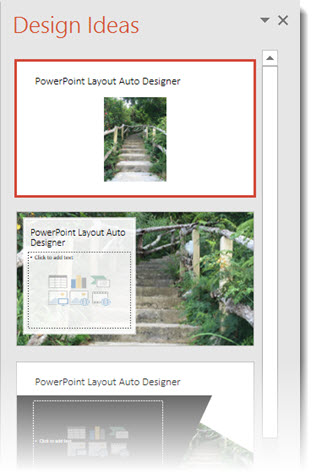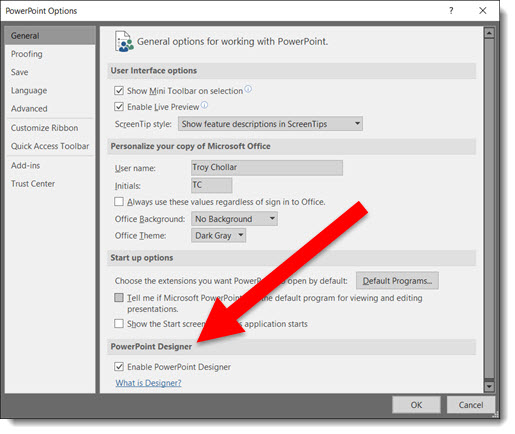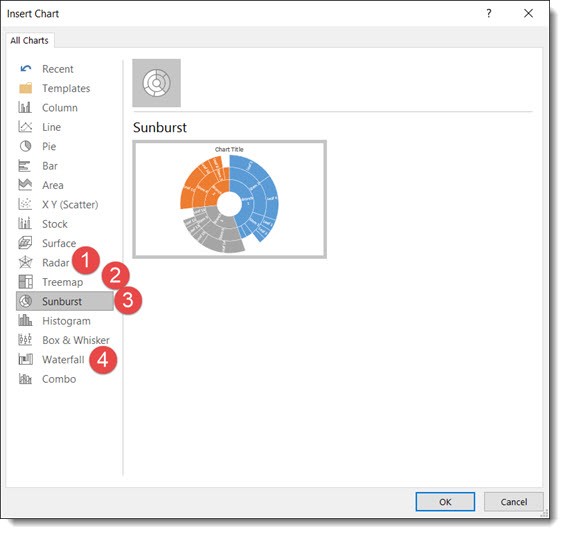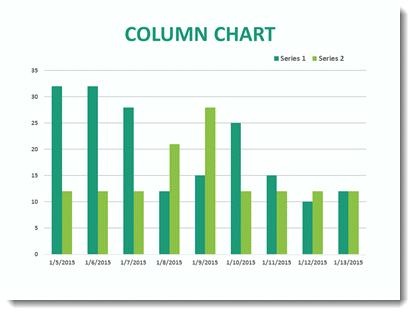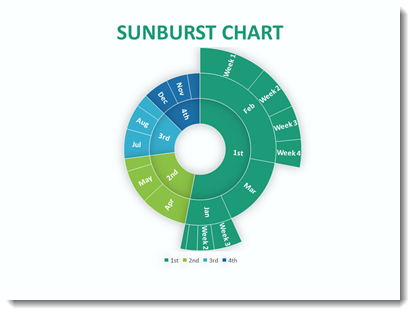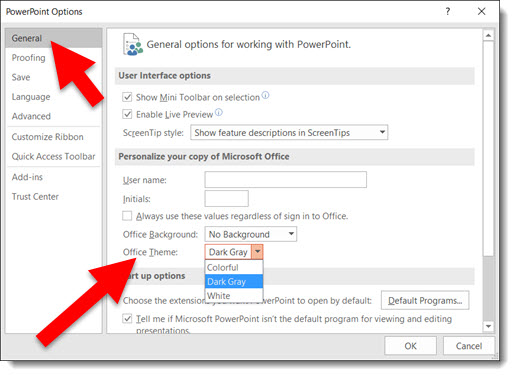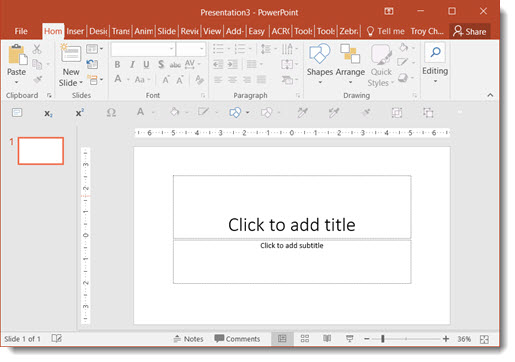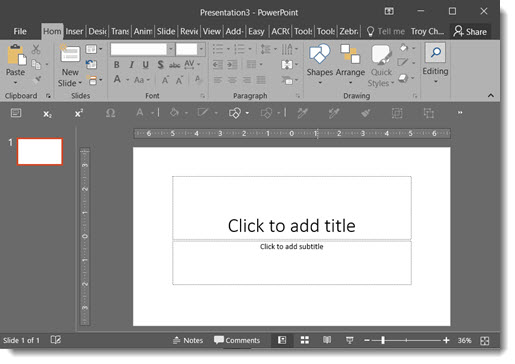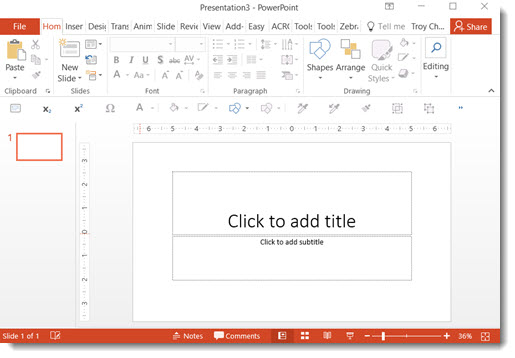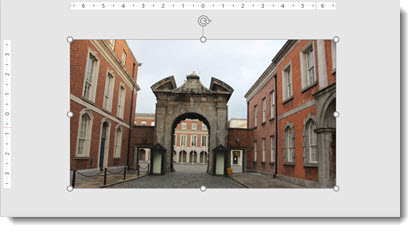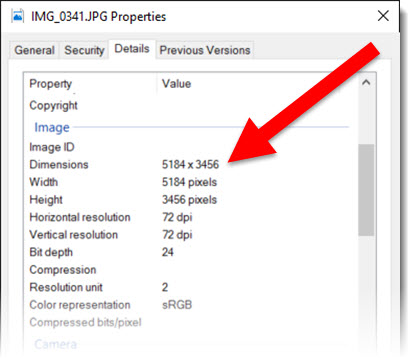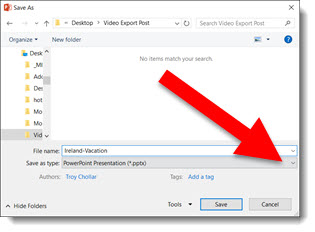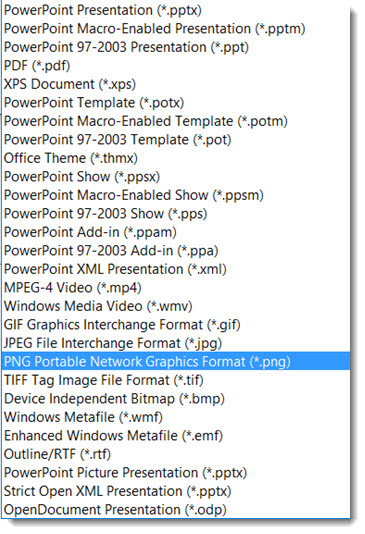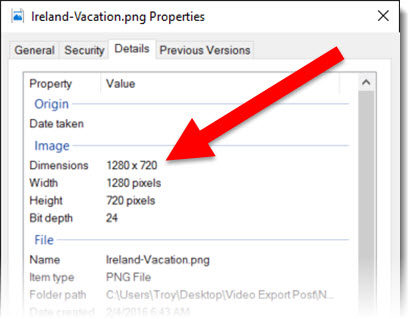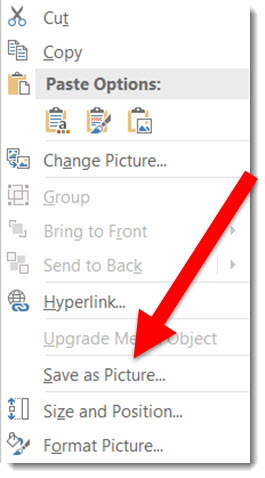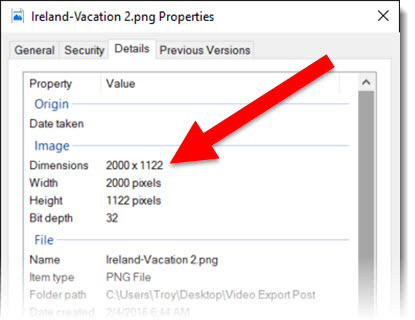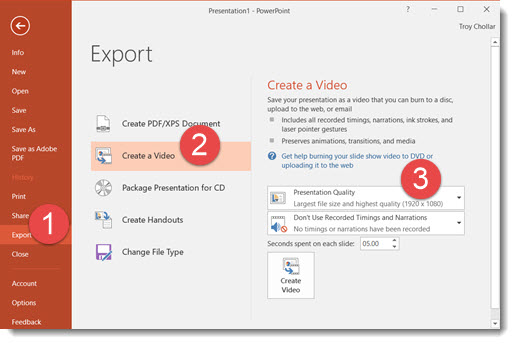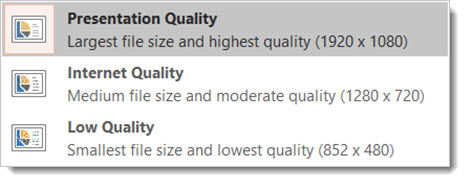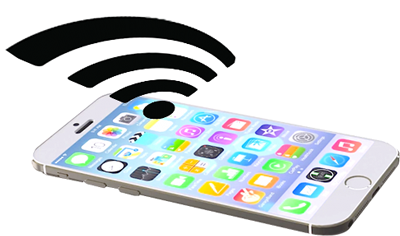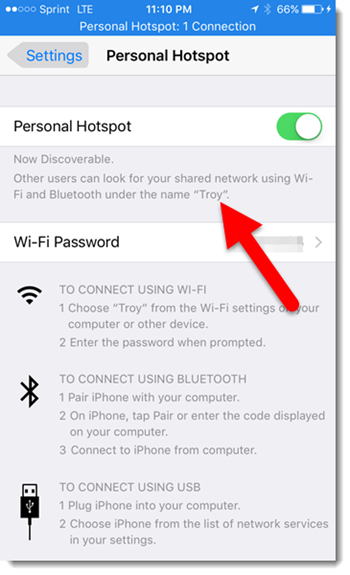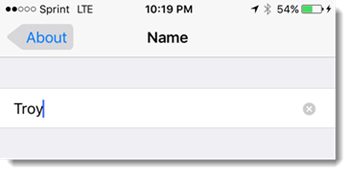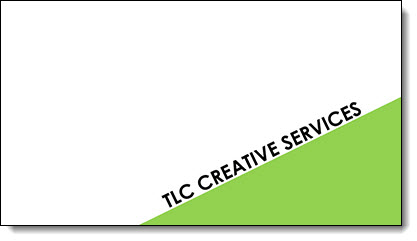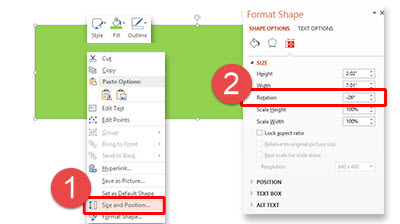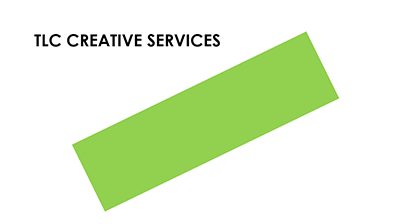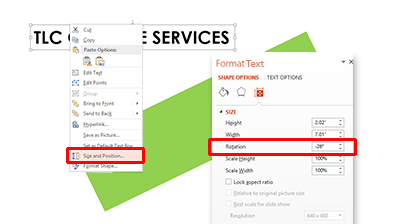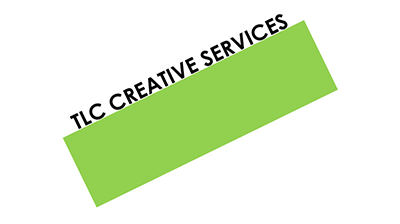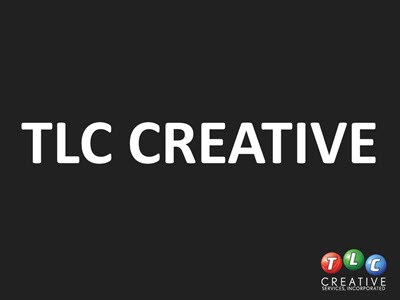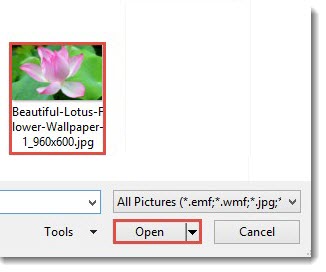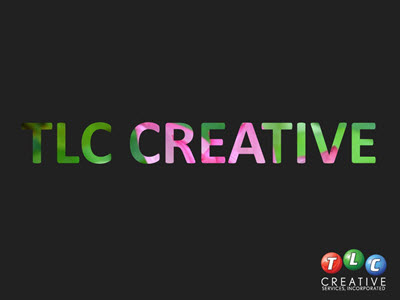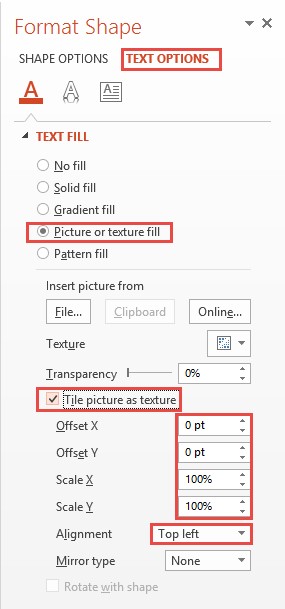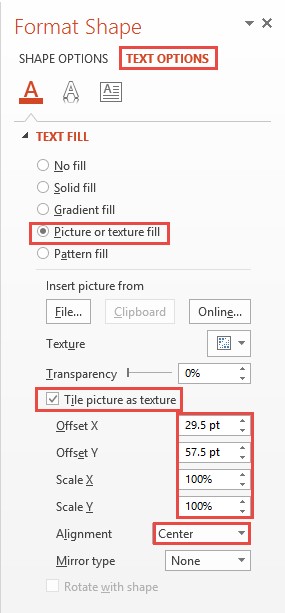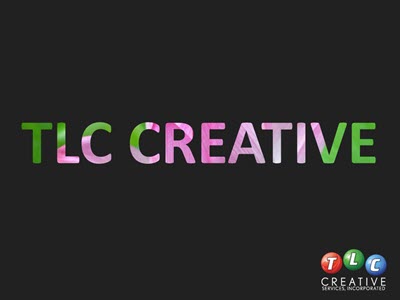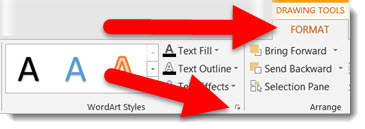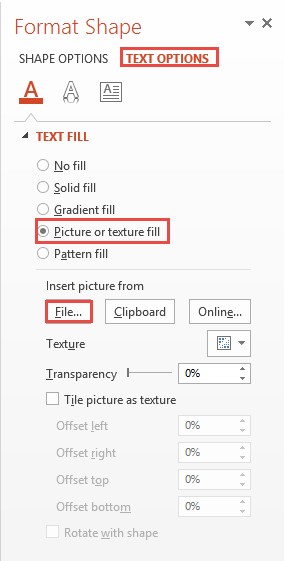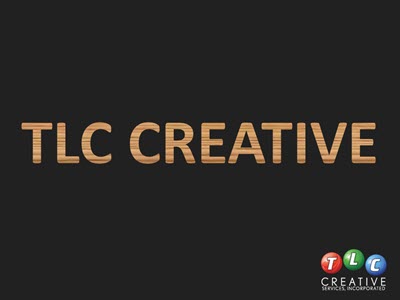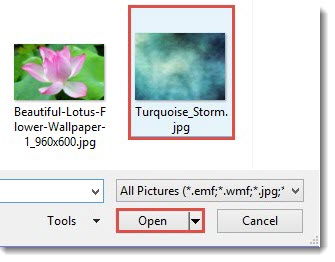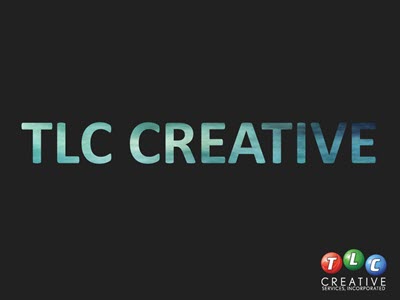[text]All of the designers at TLC use Snagit for screen shot needs; it is installed on every computer we have. Windows and Mac OS both have built in screen capture options that are cute and nice, but not robust. We recently found Awesome Screenshot.com which is a great online screen share, and edit app, something we can use when working on a guest computer.[/text]

[text]Awesome Screenshot is free for 30 images and 1 project folder. The premium option (currently $8.99 promo, regularly $11.99 year) has unlimited image captures and project folders. The Chrome browser is the only one that supports the add-in, but the annotation and editing features can be used on any browser. The Chrome add-in makes Awesome Screenshot a more full featured option (eg. Use Chrome for this app).
[/text]
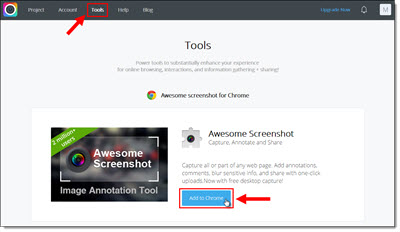
[text]Possibly one of the coolest features of Awesome Screenshot is adding comments to screenshots (much of what we use SnagIt for) and sharing directly from the site. In addition, other users are able to comment on the screenshot image as well, so this can make collaborative feedback simpler than ever! Some other cool tools are highlighting or blurring text. But the editing tools are more limited than other apps with fewer less colors, shapes, etc. Still, the ability to organize the screenshots by project is unique and pretty awesome (pun intended)![/text]
[text]Use Chrome and create an account. Under the Tools tab, select Add to Chrome, and follow the steps to install.[/text]
[text]After installed, Chrome has this app icon.[/text]

[text]Click the Awesome Screenshot icon to view capture options.[/text]
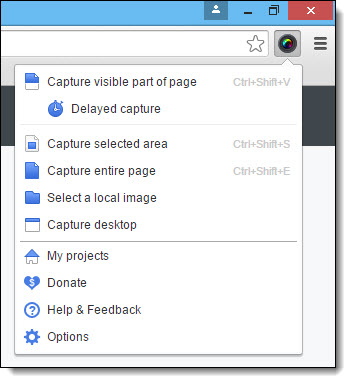
- Capture visible part of page: Captures only the visible area of the current browser page
- Delayed capture: Captures only the visible area of the current browser page three (or five) seconds after clicking
- Capture selected area: Allows you to select the area of the current browser page to capture using a marquee selector
- Capture entire page: Captures the entire area of the current browser page (include non-visible areas that require scrolling to see)
- Select a local image: Allows you to choose an image that is saved locally to your computer or drive[/list_item]
- Capture desktop: Allows you to select from any open windows or computer screen(s) to capture
- My projects: Takes you to the Projects library
- Options: Allows you to update the settings, such as image format, shortcut, and delay time specifications
[text]In addition, you can drag and drop existing images into the open project folder of your choice or select “Add images” from the project folder page on the website.[/text]
[text]Capture a screenshot (all or part of the screen) and it shows up in the simplified Annotation (or edit) screen. Save the image to a project folder to get to the full editing options.[/text]
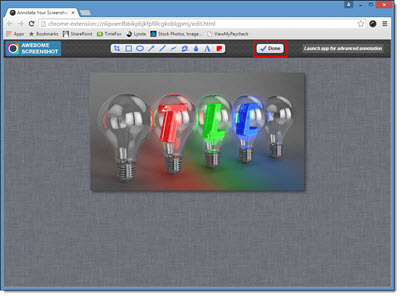
[text]There are several save options – save online for best collaboration.[/text]
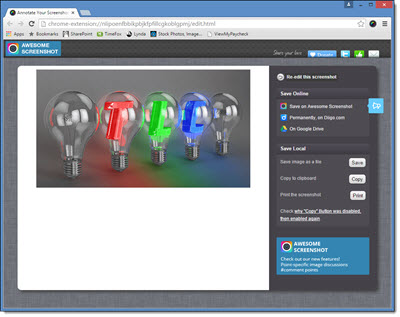
[text]To edit, click the Annotation icon while hovering over the image.[/text]
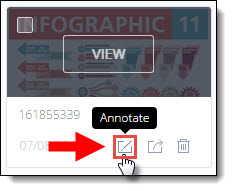
[text]The top bar is the editing tools: Crop, draw, shapes (rectangle or oval), arrows/lines, text, blur, color, line weight, undo, redo, reset, delete shape, and zoom.[/text]
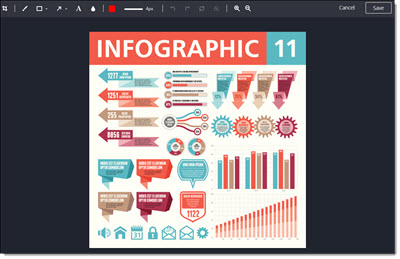
[text]Save edits and add comments. By default, it goes to the comments page. You can also select other images in the project folder, share the image, return to the Annotation page, or view the comments list.[/text]
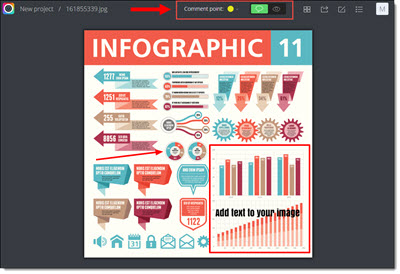
[text]Click the “eye” icon to exit the page, or right-click select Save image as to get a local version of the image on your computer – which can be added to a presentation.[/text]
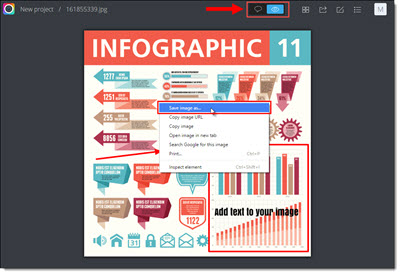
[text]Thanks to staff designer Michelle for this review.
– Troy @ TLC[/text]
